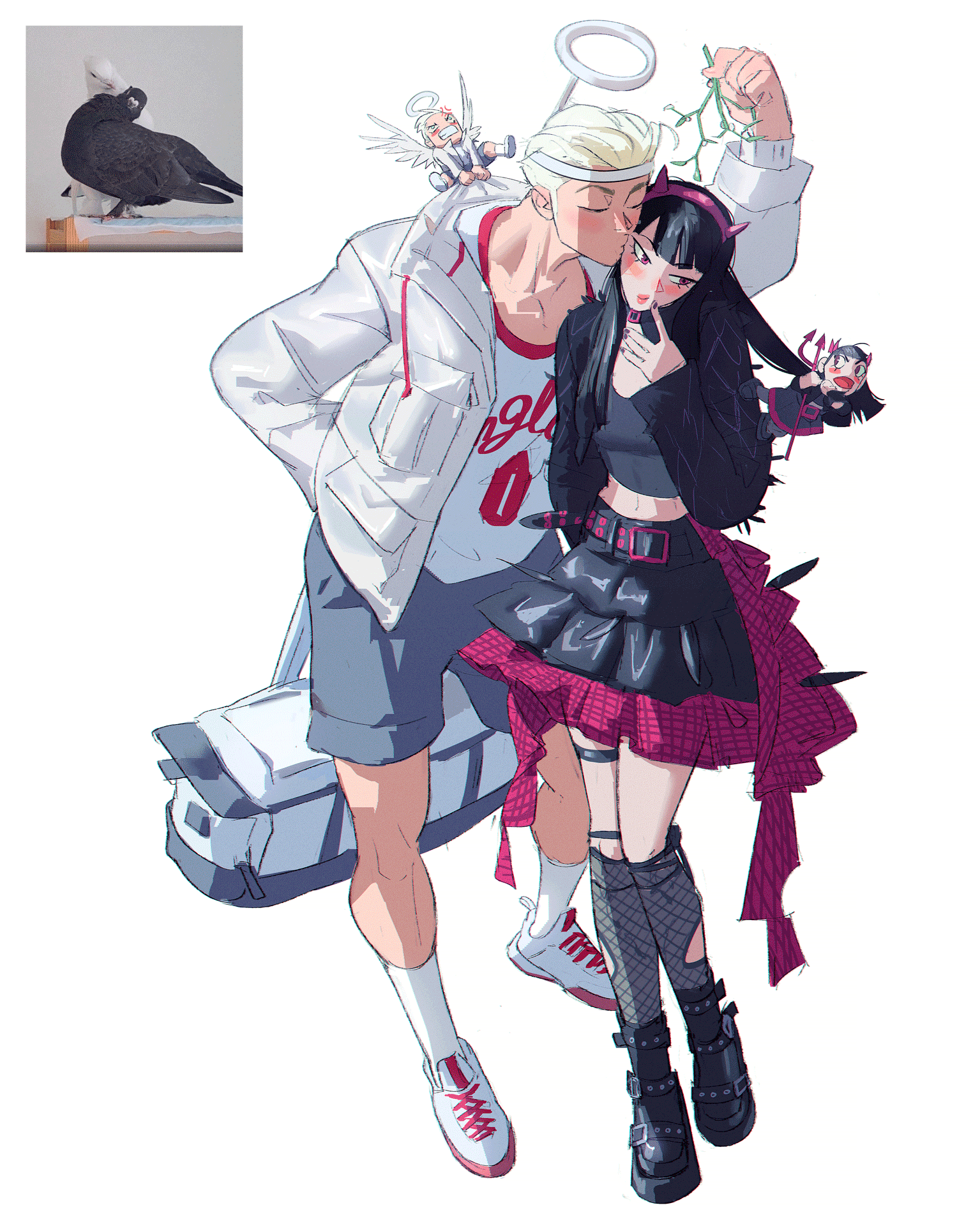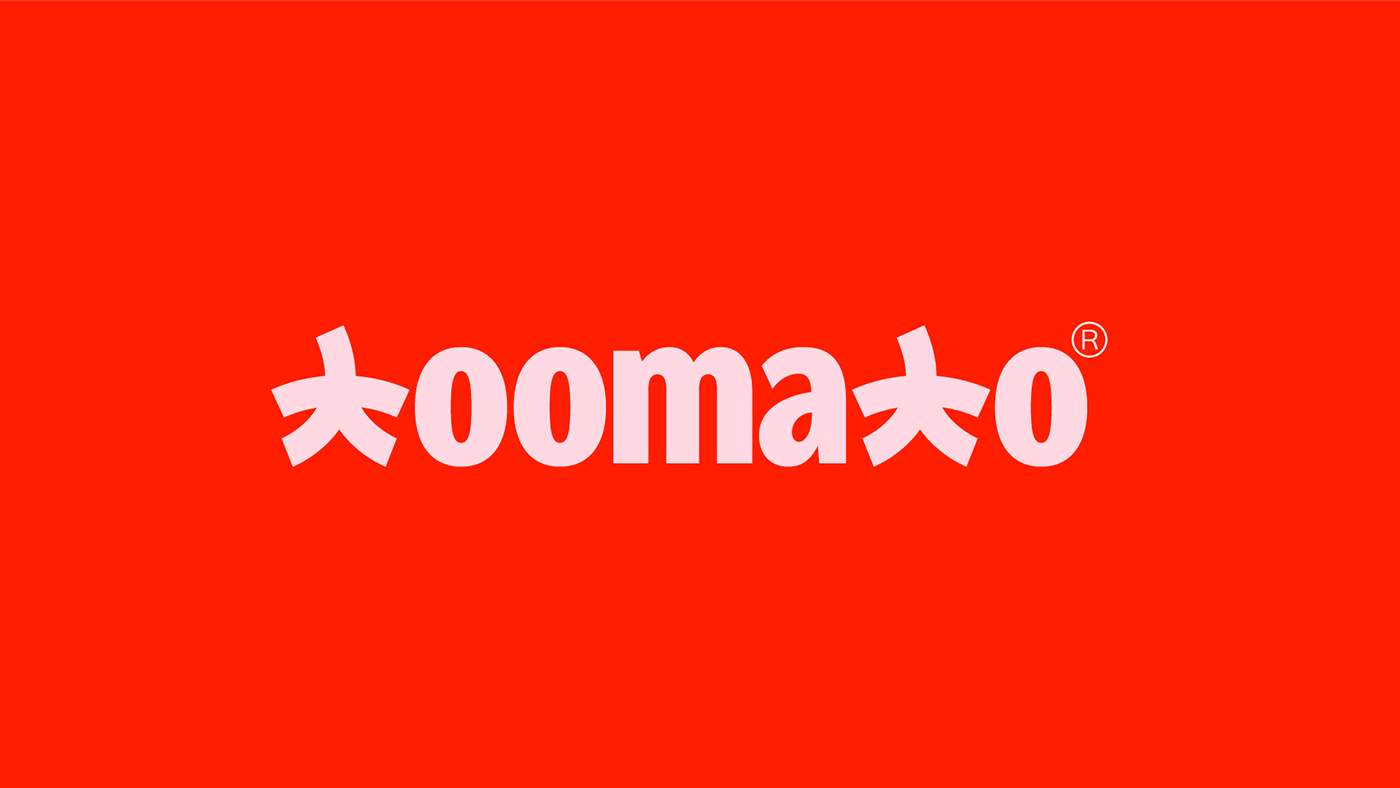
HECTOR - TRANSDEV PARTNERSHIP 4th YEAR
GROUP PROJECT - Aurore GUILLON, Agathe PAJOT, Valentine BORDET, Yohan BENCHETRIT, Thomas BUSSON and Thibaud PORCHEROT
During our 4th year at STRATE, School of Design, we had the chance to take part in a partnership with TRANSDEV. They gave us a comprehensive brief in which our vehicle had to be customizable, electric, autonomous and connected. It should be an urban vehicle which can welcome a minimum of 4 persons and a maximum of 6. It had a speed limit of 50 km/h and should complete the existing transport mesh.
"What is your vision of the autonomous taxi in 2025, both in terms of design and associated services?"

_______
PART 1 - BRIEF ANALYSIS
Our multidisciplinary team - mobility designers and service designers - allowed us to think of the project in terms of its transversal nature: taking into account the needs of our future users both in the integration of this new service and in its use.
To begin our analysis phase, we have chosen to identify the main opportunities for the implementation of autonomous transport in the long term. This projection has enabled us to broaden the scope of possibilities while ensuring that we propose a solution that can be gradually implemented over the next few years.
To begin our analysis phase, we have chosen to identify the main opportunities for the implementation of autonomous transport in the long term. This projection has enabled us to broaden the scope of possibilities while ensuring that we propose a solution that can be gradually implemented over the next few years.
The first step we went through was the development of our target vision. It was a question of defining the target we wanted to reach as well as the main objective for our future users. The first challenge we faced during the construction of the project was to look at the opportunities that the implementation of autonomous transport could bring, knowing that its use is still too intangible and understandable, and how to bring a value proposition.
The first step we went through was the development of our target vision. It was a question of defining the target we wanted to reach as well as the main objective for our future users. The first challenge we faced during the construction of the project was to look at the opportunities that the implementation of autonomous transport could bring, knowing that its use is still too intangible and understandable, and how to bring a value proposition.
After days of arguing, we finally agreed on a defined observation and opportunity.

_______
PART 2 - CONTEXT
In identifying the opportunities available to us, we wanted to focus on targets unfamiliar with autonomous transport: children.
For us, this positioning was obvious: how to familiarize users with the arrival of autonomous transport for a "sensitive" target where the challenges are all the more difficult to meet?
In analysing the relationship between children and transport, we decided to focus on an existing scheme: school pick-up.

To better understand the complexity of the situation, and to offer a relevant concept, we imagined several different scenarii related to children and their activities. From, the sport activities, to the school trips, going through commuting and grand parents visits, we tried to analyse every possible situation. For each one of them, we imagined a version before and after Hector, to evaluate lacking points or advantages. We then gathered all the different information in one concept.
We also wanted to gain the trust of every people related in some way to Hector. Therefore, we created several user profiles with concerns they might have. For instance, how is the system set up? What happens if the child or the vehicle is late? What will become of the Transdev drivers? How can you be sure to arrive on time? How do I know what vehicle I´m supposed to get into when I get out of school? We then answered them and include those imputs inside our concept.



_______
PART 3 - SCENARIO
The creation of the scenario was obviously a crucial part in our process. The most difficult part was o gain the trust of the schools and the parents. This is the reason why we first decided to build a specific organization, including parents, schools and government, so that they are all aligned with each other.

Below, you can see our scenario, that we created together and tried to have is as complete and precise as possible. It starts with a special organization: the system and the AI define how to dispatch the vehicles. The first factor is obviously the geo-tracking to pick children who are in the same area. The second factor is the arrival time of the children at school. Each Hector is carrying kids who should arrive approximately at the same time at school. The third factor is the age of the children. We observed that kids are very sensitive to their age, and it can be tricky to mix the age inside one shuttle. The fourth and last factor is the filling of the shuttle. To optimize each journey, each shuttle has to be full.
_______
PART 4 - IOT
To offer the most seamless experience for the children and the parents, we designed 3 different objects, depending on the age of the children.





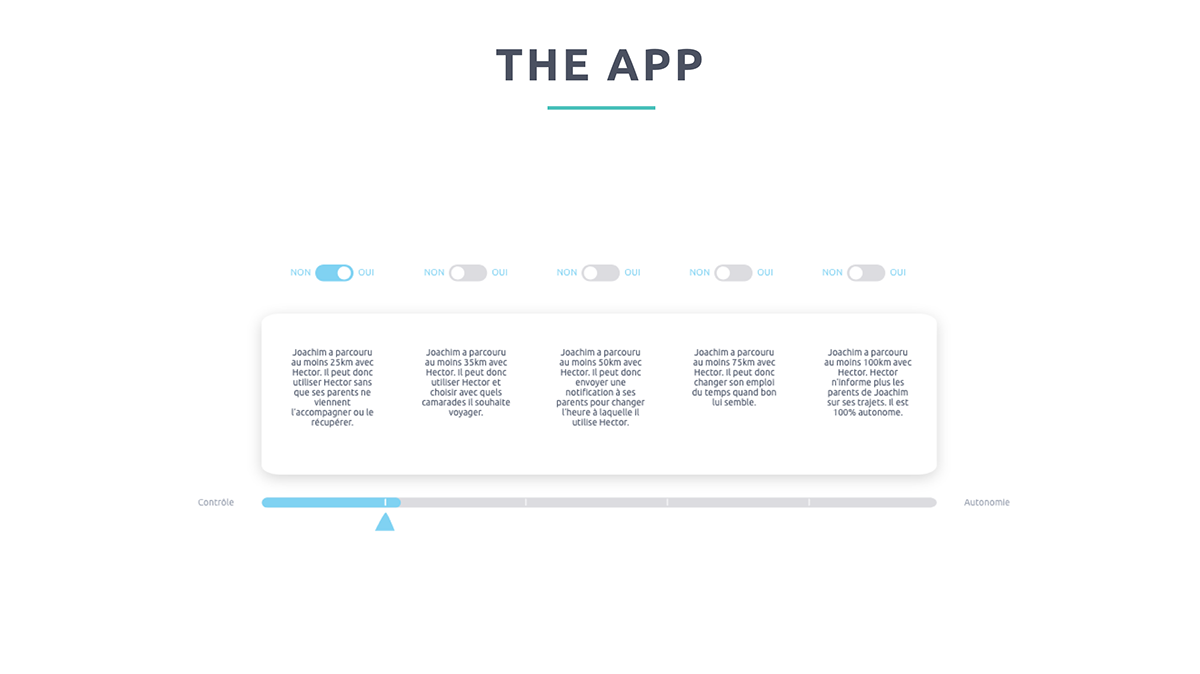
_______
PART 5 - VEHICLE DESIGN RESEARCH
To be able to design a coherent vehicle in interior and exterior we had to dig into images and visual themes. We created this visual moodboard, which plays on shiny colors, soft and knitted materials and round sections. We wanted to have a design that convey safety and joy. As the users are children, the design also had to be intuitive and simple.


















We began with the interior design, which was crucial for our concept. We tried to design a vehicle obviously for children but also for parents, who want their child to be safe. Therefore, our vehicle had to offer as much freedom as possible to children while convincing parents it is a safe vehicle. If we want parents to let children use our vehicle, parents should trust its safety. That's why we had to major elements: Openness & Protection.

The main topic of our project was to find how to convince children to get inside our vehicle. We had to find the main activity for the children. We thought about enhancing the community power from children. Everyone knows that children can easily create stories, worlds and characters with practically nothing. That ability is further developed when children are in group. That is why we created a specific space inside the vehicle where children will be able to express themselves, alone or in group. The main goal is to enable the children to create worlds and stories as daily journeys progress, to use the existing world as a base and then transform it as wanted.
More globally, we separated the vehicle in 2 major parts: the children area and the chaperone area. We decided to include one adult in each vehicle to embody the role of security which is crucial to parents. The chaperone should watch over the children and accompany them outside of the vehicle each time safety is needed. In the kids area, children can seat in 2 positions, the first one focused on the center of the vehicle and the second one, turned in front of the windows to enable them to virtually draw on the surrounding environment.


In terms of architecture, the vehicle is leveled into several floors. The bottom floor and the upper floor are for children to them a choice. At the rear of the vehicle, we placed the chaperone, between those 2 levels, on top of a platform, so that he is able to watch over the children on both floors. For the kids, we thought about designing a swing surrounded with knitted filets to be both secured and free and also to offer a funny atmosphere.


We then focused on the chaperone area, which has to be comfortable and useful. We had to include storages while having a visually light seat to enable a large and wide vision over the children. Moreover the adult had to be in front of the entrance to secure the vehicle. Just right of the entrance, a storage space allows the children to leave their bags and coats.

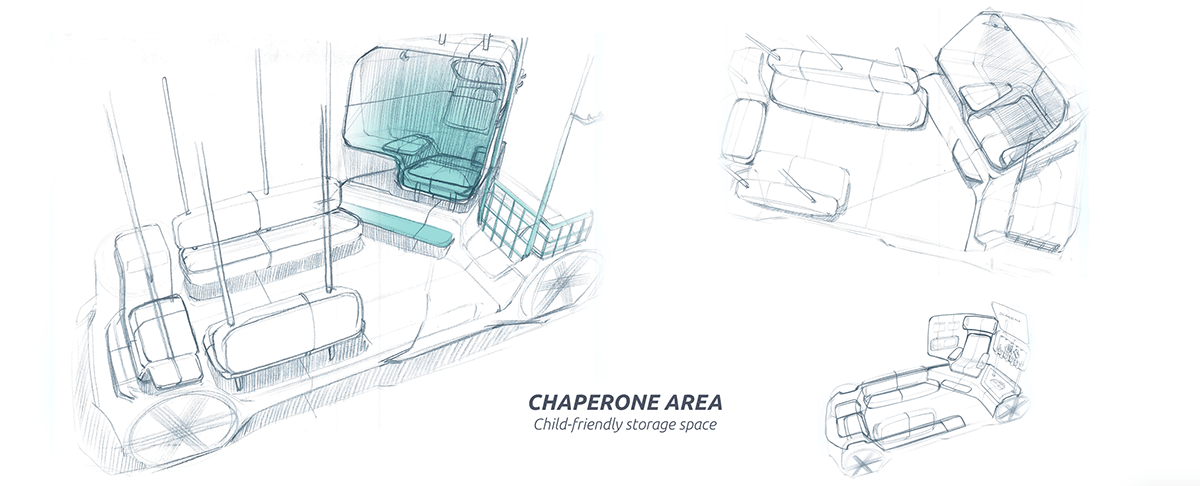
At that step of the project we had almost every element of the interior. Nevertheless, our vehicle lacked of a global theme, which harmonized the design. So we draw several seat designs and tried to create a theme that looked not only funny but also safe ans useful, which allows different seating positions for the children and a comfortable seating for the chaperone. We then applied this design theme to details like


For the exterior look of Hector we wanted to inspire trust and freedom, just like in interior. That is why we put those big glass surfaces, enclosed in a strong structure. The capsule in like a jewel on a ring. We tried to implement the LIDAR on the roof, at every corner of the vehicle in a ear shape to disguise it. During our process we faced a problem, which was that we had to find a way for the children to know what shuttle they should get into. We decided to design the door opening in a special way to enable children to know. We used gravity sketch for this project and it was very useful to have the same point of view as small children and to understand the requirements. When children are getting out of school, there is a crowd of people, so it's rather difficult to see something, unless it is high enough. This is why, the door of the shuttle opens going up, with a specific symbol on it, which corresponds to the symbol the children have on their device. In that way, everyone is able to get inside the right shuttle.


_______
PART 6 - FINAL DESIGN
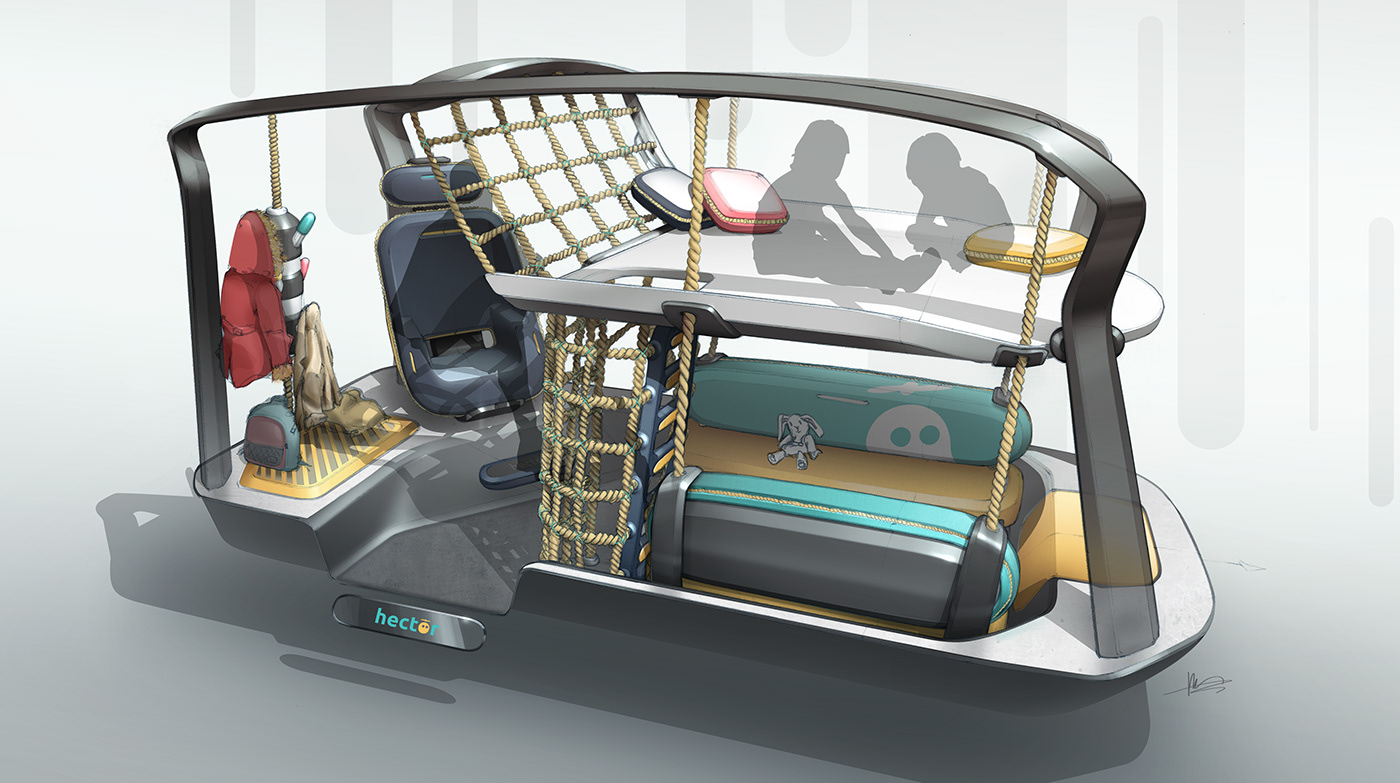
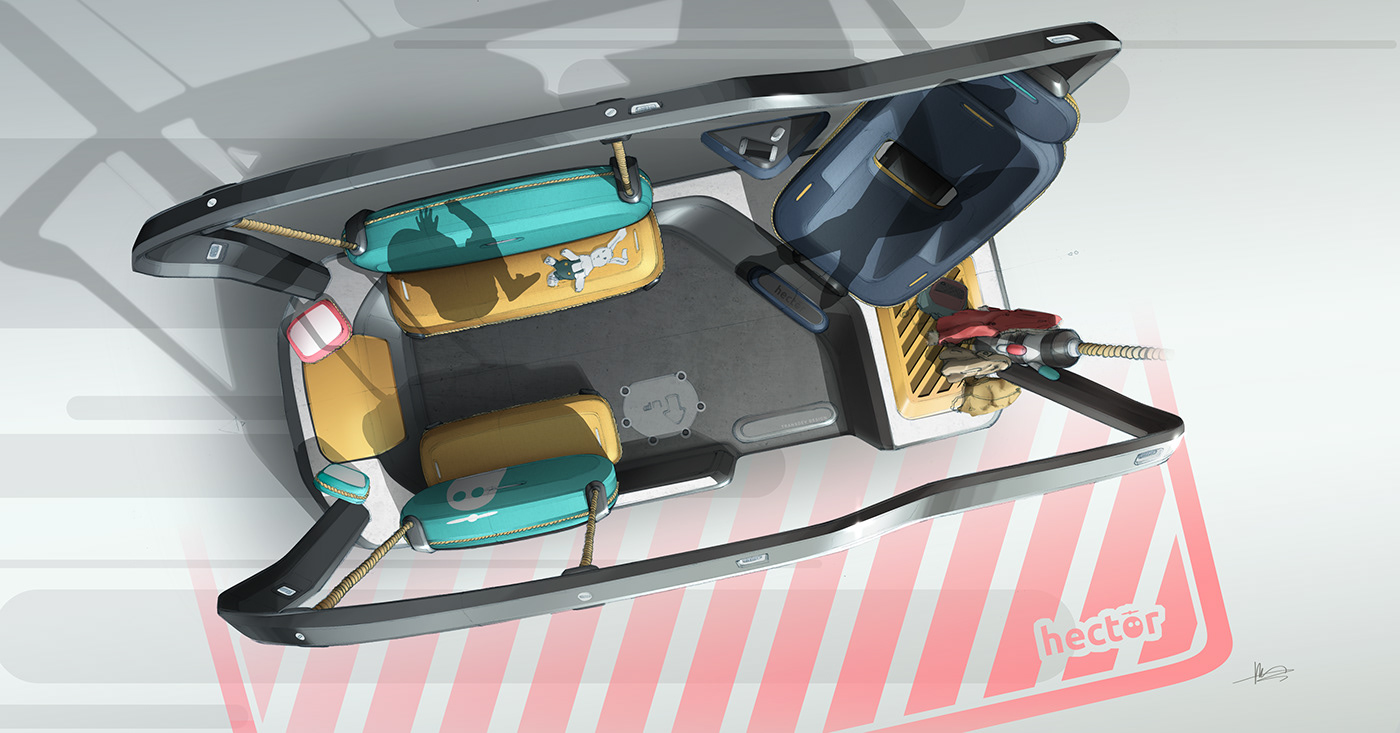






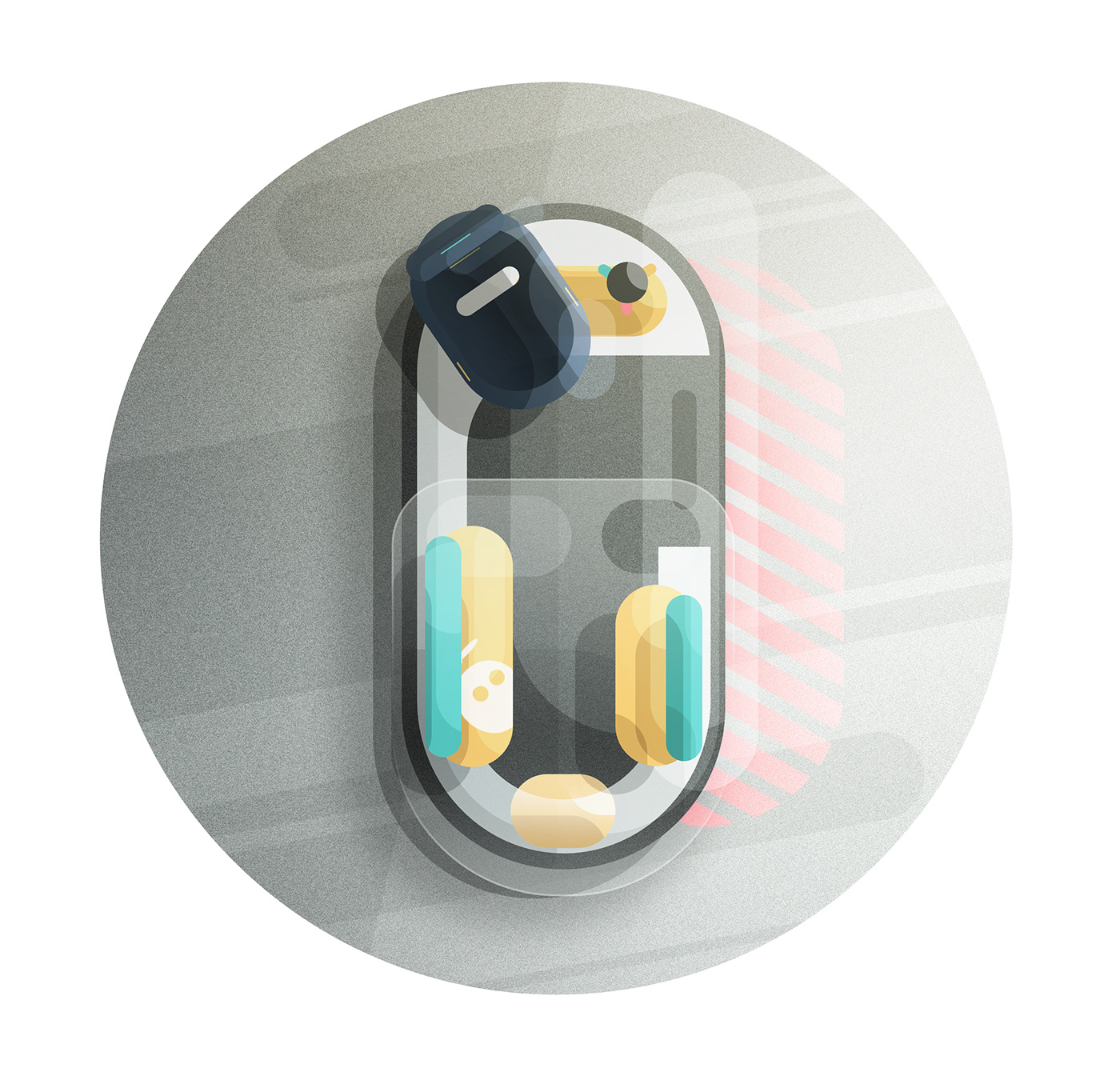

_______
Thank you for your time looking at this project. I hope you liked it!
Special thanks to Serge RUSAK, Mike LEVY and Louis BAUDET, Transdev and everyone who was involved in this amazing experience!
